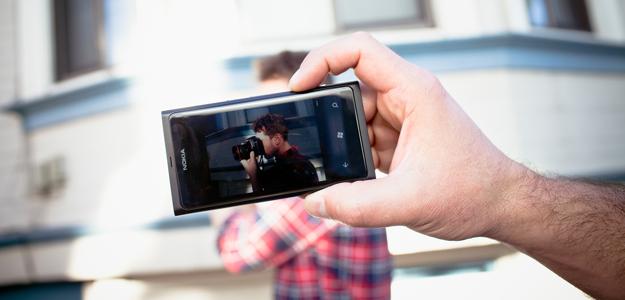 The idea of a blind photographer seems like an oxymoron at first; after all, the ability to see and frame the shot before snapping the picture seems like the most basic asset to photography. Not to researchers from the University of California at Santa Cruz. The team has developed a smartphone app that can help photographers take pictures without needing to see what’s in front of them.
The idea of a blind photographer seems like an oxymoron at first; after all, the ability to see and frame the shot before snapping the picture seems like the most basic asset to photography. Not to researchers from the University of California at Santa Cruz. The team has developed a smartphone app that can help photographers take pictures without needing to see what’s in front of them.
The unnamed app is the work of a team led by Dustin Adams, and the technology builds on existing smartphone facial detection sensors to create something that will guide partially-sighted users to create perfect photographs (or something close to it, at least).
Adams and his team started by polling more than 50 people between the ages of 18 and 78, all of whom had some degree of visual impairment – from fully blind to slight light perception – about the problems they had taking photographs. Using their feedback as a baseline for “must-have” elements they needed to work on, the team found that the most necessary adaptation wasn’t just how to help frame the shot, but to also fix control placements.
So to that, the USCS team said goodbye to buttons. The test app is voice controlled, allowing the user to take a picture without finding the right shutter buttons on the screen. Instead of finding the app icon on the phone, users can activate the app with upward swipe gesture and the app will begin talking to the user to identify the number of people in the frame before the shot is taken.
Once activated, the camera has a 30 second countdown before the picture is taken. In that time, audio cues will continue to count the number of people in the frame, allowing the user time to get everyone in shot, and explain whether the subjects are in focus. In addition to the speech guidance, the app also records the user within that 30 second window and the user can choose to save that audio file in combination with the photo to help with organization or photo sharing. Of course, thanks to most smartphones’ standard of built-in GPS, pictures can be geotagged.
So it seems like the app is useful for taking photos of friends and family and not so much the things surrounding the vision-impaired, but at least it’s a start. Sadly, the app hasn’t been made available to the public just yet. Before that happens, the UCSC research team will present the findings of their study at the Pervasive Technologies Related to Assistive Environments conference in Rhodes, Greece, later this month. Perhaps after that, it won’t be long before anyone could become a better photographer, regardless of their skill level or eyesight.


